MATTHEW
THE NEW TESTAMENT LIBRARY
Editorial Advisory Board
C. C LIFTON B LACK
J OHN T. C ARROLL
S USAN E. H YLEN
R. Alan Culpepper
Matthew
A Commentary

2021 R. Alan Culpepper
First edition
Published by Westminster John Knox Press
Louisville, Kentucky
21 22 23 24 25 26 27 28 29 3010 9 8 7 6 5 4 3 2 1
All rights reserved. No part of this book may be reproduced or transmitted in any form or by any means, electronic or mechanical, including photocopying, recording, or by any information storage or retrieval system, without permission in writing from the publisher. For information, address Westminster John Knox Press, 100 Witherspoon Street, Louisville, Kentucky 40202-1396. Or contact us online at www.wjkbooks.com.
Scripture quotations from the New Revised Standard Version of the Bible are copyright 1989 by the Division of Christian Education of the National Council of the Churches of Christ in the U.S.A. and are used by permission.
The Gospel of Matthew is translated by the author except for some quotations within the comments.
BWHEBL TrueType font Copyright 19942015 BibleWorks, LLC. All rights reserved. This Biblical Hebrew font for a is used with permission and is from BibleWorks (www.bibleworks.com).
Book design by Jennifer K. Cox
Library of Congress Cataloging-in-Publication Data
Names: Culpepper, R. Alan, author.
Title: Matthew : a commentary / R. Alan Culpepper.
Other titles: New Testament library.
Description: First edition. | Louisville, Kentucky : Westminster John Knox Press, 2021. | Series: The New Testament library | Includes bibliographical references and index. | Summary: In this new critical commentary for the New Testament Library series, R. Alan Culpepper sets the book of Matthew in the context of the competing Jewish and early Christian voices of the first century, bringing greater clarity to Matthews own proclamation of the gospelProvided by publisher.
Identifiers: LCCN 2021033994 (print) | LCCN 2021033995 (ebook) | ISBN 9780664230616 (hardback) | ISBN 9781646982172 (ebook)
Subjects: LCSH: Bible. MatthewCommentaries.
Classification: LCC BS2575.53 .C85 2021 (print) | LCC BS2575.53 (ebook) | DDC 226.2/07dc23
LC record available at https://lccn.loc.gov/2021033994
LC ebook record available at https://lccn.loc.gov/2021033995
 The paper used in this publication meets the minimum requirements of the American National Standard for Information SciencesPermanence of Paper for Printed Library Materials, ANSI Z39.48-1992.
The paper used in this publication meets the minimum requirements of the American National Standard for Information SciencesPermanence of Paper for Printed Library Materials, ANSI Z39.48-1992.
Most Westminster John Knox Press books are available at special quantity discounts when purchased in bulk by corporations, organizations, and special-interest groups. For more information, please e-mail .
For
Joshua, Abigail, and Elise
CONTENTS
Mikhail Bakhtin (1984, 106) said, A genre lives in the present, but always remembers its past, its beginning, and that is certainly true of this volume. It bears marks both overt and subtle of a lifetime of experiences, mentors, colleagues, students, and friends. A childhood routine of reading a few Bible verses before bedtime engrained key texts in my memory, and when I was six I asked my father to explain Jesus death to me! He had studied Greek with Hersey Davis, when Greek was required every semester in the BD curriculum, and he continued to read his Greek New Testament every day for the rest of his life.
Other teachers followed. John Claypool modeled good hermeneutics as well as effective preaching. As an undergraduate at Baylor, I was intrigued to discover the chronology that connected the individual biblical stories. At the Southern Baptist Theological Seminary, I acquired a love for the Greek NT and was introduced to the Gospel of John by William E. Hull; the Jewish, Hellenistic, and Roman world of the NT by Harold S. Songer; and textual criticism by Frank Stagg. At Duke, I was introduced to the Gospel of Matthew by W. D. Davies, in whose seminar on the Gospel of Matthew we worked through Matthew 12! D. Moody Smith became my mentor in the Gospel of John (and Mark). Orval Wintermute taught us Hebrew and Coptic; Roland Murphy, Aramaic; James Charlesworth, Syriac (and the Apocrypha and Pseudepigrapha); and John Oates, Classics.
Many of the names that appear in the text and footnotes of this commentary carry with them friendships and enriching experiences. My education continued in my first faculty position, back at Southern Seminary, which had a NT department of seven that met weekly with PhD students in the NT Colloquium. David Garland, Roger Omanson, and I were assistant professors. Hull, Songer, Stagg, George Beasley-Murray, Peter Rhea Jones, and John Polhill were all colleagues for various periods between 1974 and 1991. In addition, Eduard Schweizer spent a semester with us as a visiting professor. Teaching and learning from PhD students brought its own rewards, and in later years I have learned from Mikeal Parsons and Edwin Broadhead in particular. During my first sabbatical (in Cambridge), Frank Kermode guided me into literary criticism and narrative theory, an exploration that continued for a decade with colleagues in the Literary Aspects of the Gospels and Acts SBL Group. Other groups and seminars had lasting influences also: the Johannine Seminar of the SNTS; the SBL John, Jesus, and History Group; and the Colloquium Ioanneum. The Christian Leaders Initiative sponsored by the American Jewish Committee and the Shalom Hartman Institute deepened my appreciation for Judaism and its long tradition of piety and learning, leading me to see that Matthew is a thoroughly Jewish Gospel. Serving on the Board of Directors for the Contexticon of New Testament Language for nearly three decades has made me aware of the inadequacy of common glosses and the importance of studying term usages in context. Invitations to write commentaries followed: Luke for the New Interpreters Bible (1995) and Mark for the Smyth & Helwys Bible Commentary (2007). My earlier work in these Gospels set Matthews handling of the Gospel traditions in sharp relief.
Academic institutions and libraries also provide resources essential for writing a volume such as this. Mercer University and its Swilley Library provided an academic home for me for twenty yearswith a special word of thanks to Beth Perry for her assistance. Candler School of Theology supported my work by extending to me access to the Pitts Theological Library and its online resources, including ATLA, the Loeb Classical Library, and the Thesaurus Linguae Graecae. Appointment as a research fellow in the Department of Old and New Testament at the University of the Free State, Bloemfontein, South Africa, offered further opportunities for international dialogue, travel, and study. My gratitude to each of these institutions and their faculty and staff is deep.
The editors of the New Testament Library series at Westminster John Knox Press set a distinctively high standard for scholarship. The selfless and collegial partnership of my editors, first Eugene Boring and then Clifton Black, provided patient encouragement, needed corrections and suggestions, and often clearer and more felicitous writing. Our friendship, strong from the beginning, has grown even stronger. Julie Mullins and Daniel Braden patiently allowed my work to progress, although it took longer than any of us expected; extended the original word limit for this volume; responded to my inquiries; then guided the manuscript through submission, editing, and production with all the attention to detail that such a volume requires. S. David Garber and Tina E. Noll, who are extraordinary editors, ensured accuracy and clarity. This team of editors has modeled collaborative scholarship at its best!
Next page
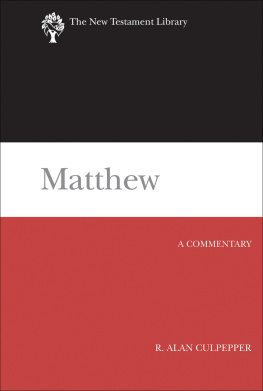


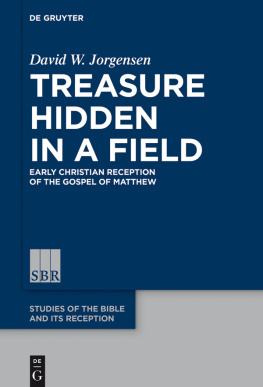
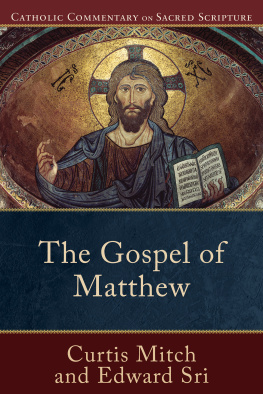
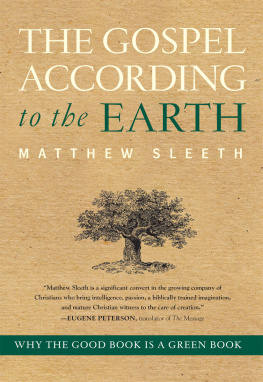
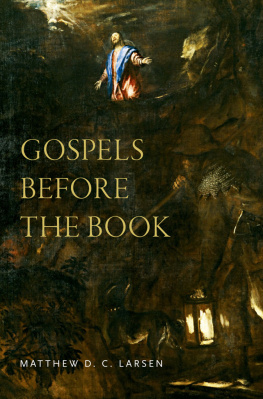
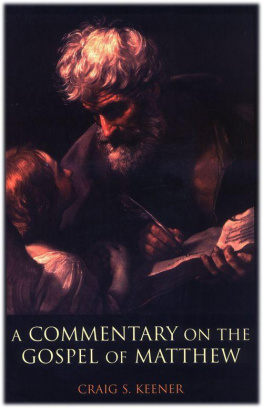
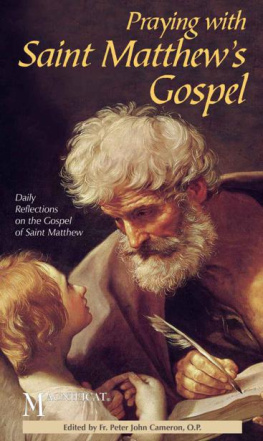
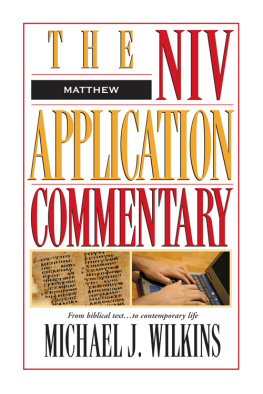
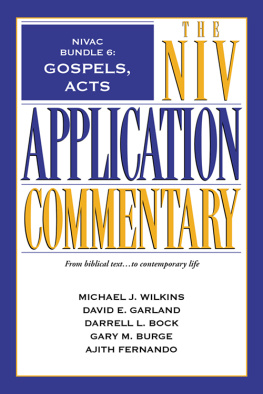


 The paper used in this publication meets the minimum requirements of the American National Standard for Information SciencesPermanence of Paper for Printed Library Materials, ANSI Z39.48-1992.
The paper used in this publication meets the minimum requirements of the American National Standard for Information SciencesPermanence of Paper for Printed Library Materials, ANSI Z39.48-1992.